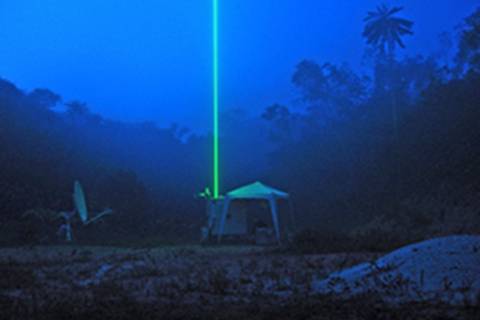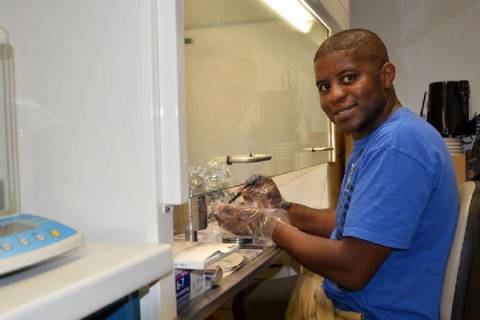
Swimming laboratories study the sky and investigate the sea surface
The better part of our troposphere is of marine nature. Especially above the tropical and subtropical oceans clouds and aerosol particles play a substantial role in the radiative forcing of our planet. TROPOS participates on ship expeditions on a regular basis in order to determine aerosols, clouds and the energy budget at the sea surface.

The measurement station around the corner and the world's highest observatory
The burden of the surface near atmosphere is spatiallly and temporarily highly variable depending both on lokal sources and weather-included long-term transports. TROPOS performs field campaigns at characteristic locations like mega cities, deserts or rain forests in order to determine concentration, size and chemiical composiition as well as their sources.

Source: TROPOS
Measurements in the clouds
Since 1997 TROPOS as one of the founding members of CARIBIC, has operated an aircraft-borne measurement container which is flown once per month for four consecutive inter-continental measurement flights on-board a Lufthansa Airbus A340-600. In this unique project, TROPOS is measuring aerosol particles with the goal to better understanding their tropospheric distribution and life cycle.
The helicopter-borne measurement platform ACTOS is used to conduct measurements directly in the clouds.

Source: TROPOS
CVAO – a research site in the tropical Atlantic Ocean
Interaction between atmosphere and ocean was investigated not only by research vessels but also by a permanent research site in the tropical North Atlantic Ocean. The CVAO “Humberto Duarte Fonseca” at Cape Verde island São Vicente is a bilateral joint project of German (TROPOS and MPI-BGC, Jena) and British (Universities York, Bristol and East Anglia) research groups supported by MPG, BMBF, EU, NERC and NCAS (Projects TENATSO, UK SOLAS, SOPRAN) in close cooperation with the Cape Verde INMG and INDP. From 2006 it was continuously enhanced and a sister observatory for oceanic research (CVOO) was installed by the GEOMAR, Kiel. The CVAO became a regional WMO-GAW station in 2008 and was upgraded to global status on 5th August 2009. The physical and chemical characterization of aerosols was realized since 2007 by the TROPOS. The deposition of Saharan dust was investigated as well as aerosol modification by species emitted by anthropogenic and marine sources. Long-term record of inter-annual variability and trends in marine tropospheric aerosol composition and associated meteorological, geophysical and oceanographic factors are focal points of research.












